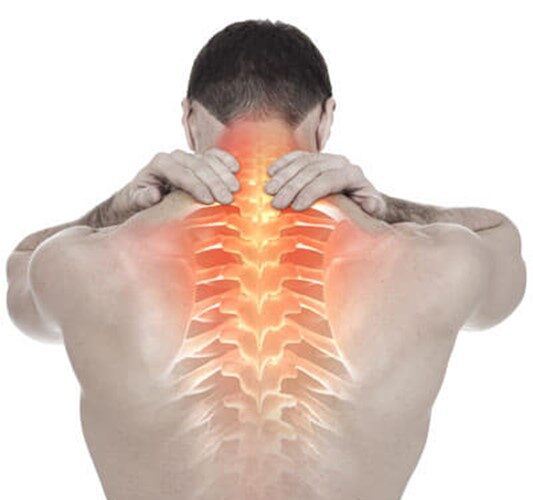
- By shoulderadm
- In Shoulder
Understanding How the Spine Contributes to Shoulder Pain
Shoulder soreness is a prevalent issue often linked to illnesses such as rotator cuff tears, tendonitis, or arthritis. However, the actual source of discomfort isn’t always in the shoulder itself. The spine—particularly the cervical (neck) and upper thoracic (upper back) regions—plays a crucial role in many cases. This spinal connection is frequently overlooked, yet recognising it is vital for accurate diagnosis and effective treatment.
How the Spine Affects the Shoulder
The shoulder and spine are intricately connected through a complex system of muscles, joints, and nerves. Many of the nerves responsible for shoulder sensation and movement originate in the cervical spine. When these nerves are compressed or irritated—often due to disc issues, spinal misalignment, or degeneration—the resulting pain can radiate to the shoulder, even if the shoulder joint itself is structurally healthy. It is known as referred pain, where discomfort is felt in one area of the body despite originating elsewhere—making accurate diagnosis difficult without a comprehensive musculoskeletal evaluation.
Common Spinal Causes of Shoulder Pain
Several spinal conditions can produce symptoms that mimic or contribute to shoulder pain. These include:
- Cervical radiculopathy: It arises when a nerve root in the cervical region is crushed or inflamed, resulting in pain, numbness, or weakness that may radiate to the shoulder and down the arm.
- Degenerative Disc Disease: Age-related changes in the spinal discs can affect nearby nerves, leading to discomfort felt in the upper back and shoulder area.
- Postural Dysfunction: Prolonged poor posture—such as slouching or forward head position—can cause muscular imbalances and strain in the upper spine, which may present as shoulder tension or pain.
- Spinal Stenosis: In this condition, spinal nerves may be impinged upon by the constriction of the spinal canal, which may occasionally cause irritation in the shoulder region.
Understanding whether the source of pain lies in the shoulder or originates from the spine is crucial for choosing the right course of treatment.
Diagnosis of Impact of Spinal Alignment on Shoulder Health
Accurate diagnosis requires a careful and thorough clinical examination. It typically includes:
- Medical history and symptom review
- Physical examination of both the shoulder and cervical spine
- Neurological testing which includes imaging such as X-rays, MRI, or CT scans if needed
- Orthopaedic specialists often work alongside physiotherapists and radiologists to ensure no contributing factor is missed.
Treatment Focused on the Root Cause
If the spine is identified as the origin of shoulder pain, treatment plans are tailored to address the underlying spinal issue. These may include:
- Targeted physiotherapy to improve spinal alignment and relieve nerve pressure
- Pain management using medication or injections
- Postural correction and ergonomic advice to prevent recurrence
- Surgical intervention, if necessary, for conditions like herniated discs or severe spinal stenosis
Conclusion
Shoulder pain is not always a sign of a shoulder problem. The spine, particularly the cervical region, can be a key contributor and, in some cases, the primary source. Recognising this connection is vital for effective treatment and long-term recovery. If shoulder pain persists despite treatment or is accompanied by neck stiffness or arm symptoms, seeking a specialist opinion is strongly recommended. A comprehensive approach that considers spinal and shoulder health ensures patients receive accurate care—targeted at the actual cause of their pain.
For enquiries and online appointments, send a message to www.BangaloreShoulderInstitute.com/contact
For informative videos related to Shoulder problems and their treatment options, Sports Injuries and other orthopedic conditions, visit our YouTube channel Bangalore Shoulder Institute – https://www.youtube.com/@BangaloreShoulderInstitute





